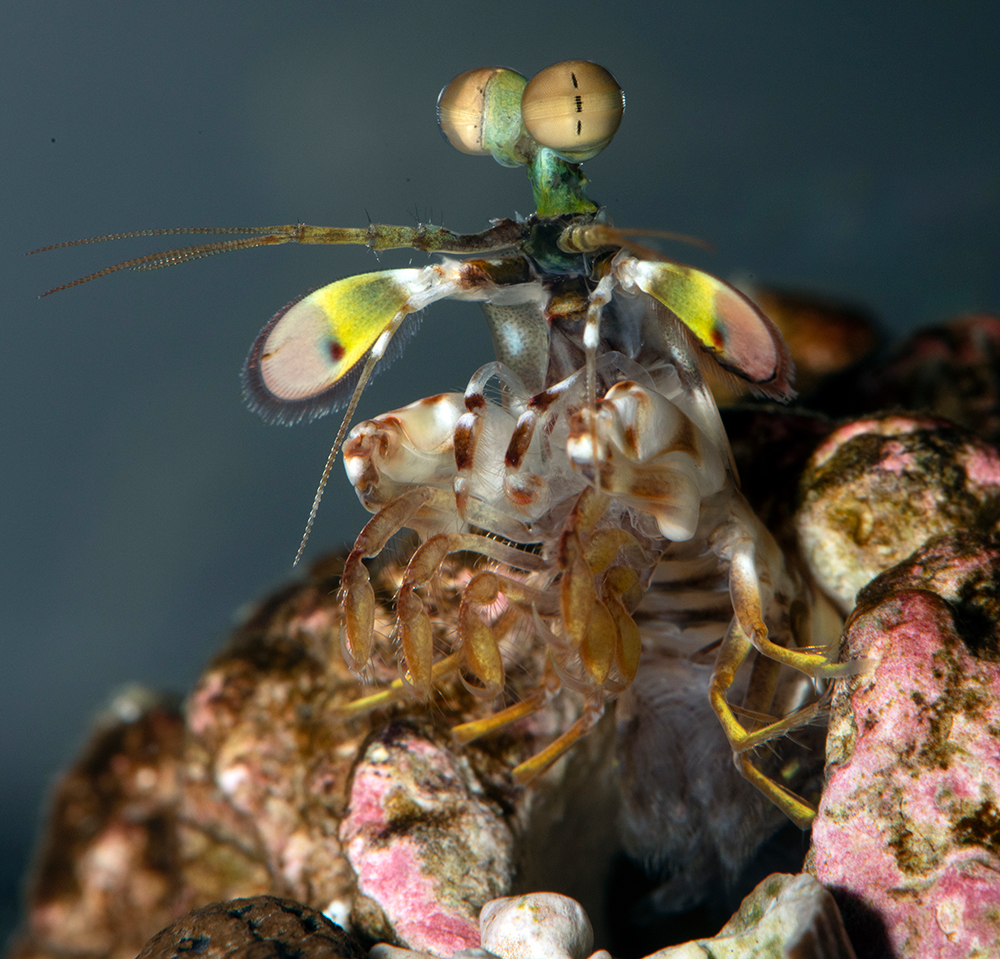Queensland Brain Institute researchers may be one step closer to understanding the evolution of colour vision in the animal kingdom after gaining new insights into one of the most complex visual systems in the world.
Professor Justin Marshall and Dr Hanne Thoen have been investigating how the tiny brains of mantis shrimp are able to make sense of a breathtaking amount of visual input.
“Mantis shrimp have four times as many colour receptors as we humans do: we have three – red, green, and blue – and they have 12,” Professor Marshall said.

“They sample light we can’t see and they also sample light we do see in a completely different way, and as a result, mantis shrimp have much more visual information coming in than we do.
“So the question is, why don’t their tiny brains explode?”
The researchers have shed new light on how the tiny crustaceans process and remember visual information by mapping a region of the mantis shrimp brain.
Professor Marshall said the answer appeared to lie in the reniform body, a region of the crustacean’s brain found in each of the eye stalks that support its two protruding eyes.
“Because of its position, it has long been thought to act as a processing centre for any visual information passing from the eye to the brain.”
To find out more, Professor Marshall and Dr Thoen teamed up with Professor Nicholas Strausfeld at the University of Arizona, as well as scientists from Lund University in Sweden and the University of Washington in the US.
Array of colours organised by brain subsections
“Using a variety of imaging techniques, we traced connections made by neurons in the reniform body and discovered that it contains a number of distinct, interacting subsections,” Dr Thoen said.
“They have the world’s most complex retina, so it’s not surprising, but comforting to find out they have a complex centre to deal with that input.
“Mantis shrimp most likely use these subsections to process different types of colour information coming in, and organise it in a way that makes sense to the rest of the brain.
“This would enable them to interpret a staggering amount of visual information very quickly.”
Brain region connects colour with memory
The researchers said they were intrigued to discover a neural connection between the reniform body and a brain region known to be involved with memory.
This connection may allow mantis shrimp to store visual memories.
“It most likely enables them to remember something that’s good to eat or something else they should run away from,” Dr Thoen said.
“It will be fascinating to now take the study forward and figure out how all the subunits of the reniform body work together to do whatever it is these animals need to make sense of their world.”
The study is published in the Journal of Comparative Neurology



